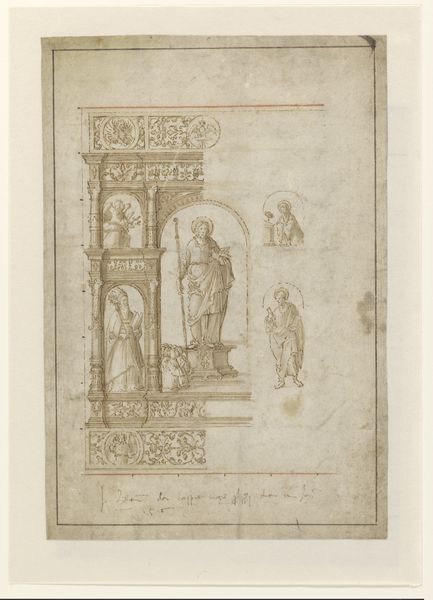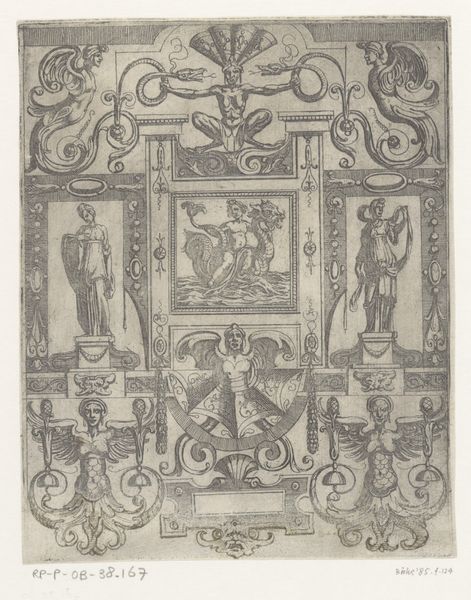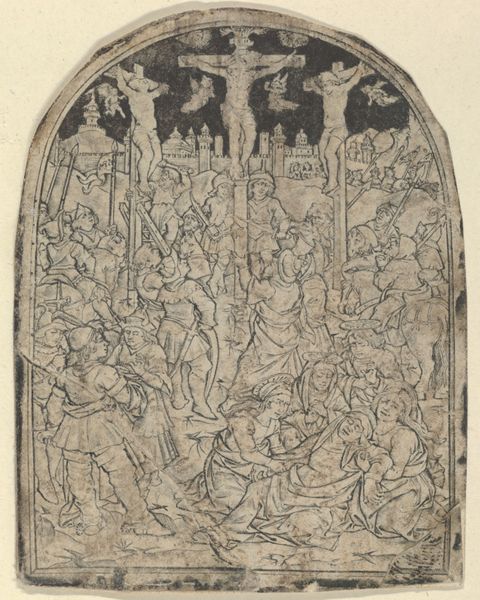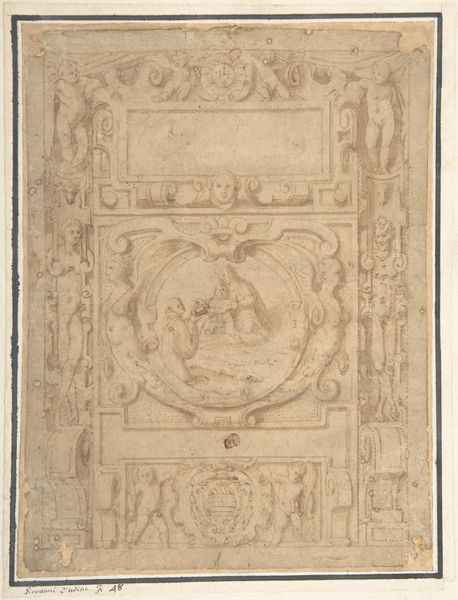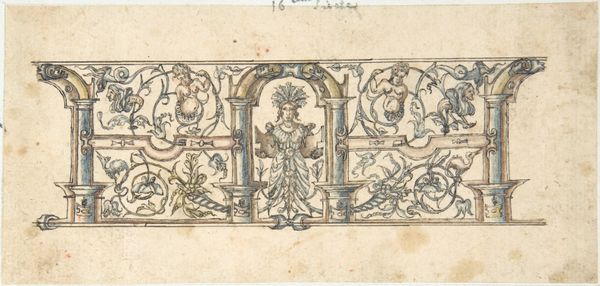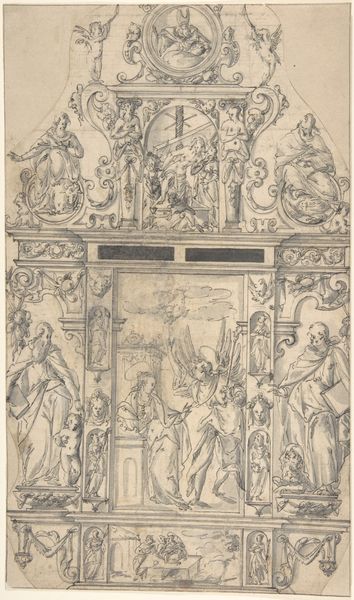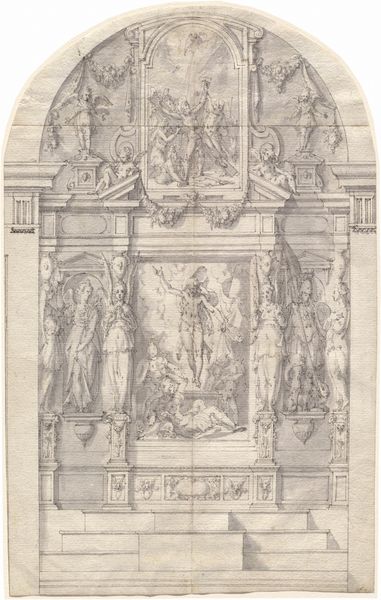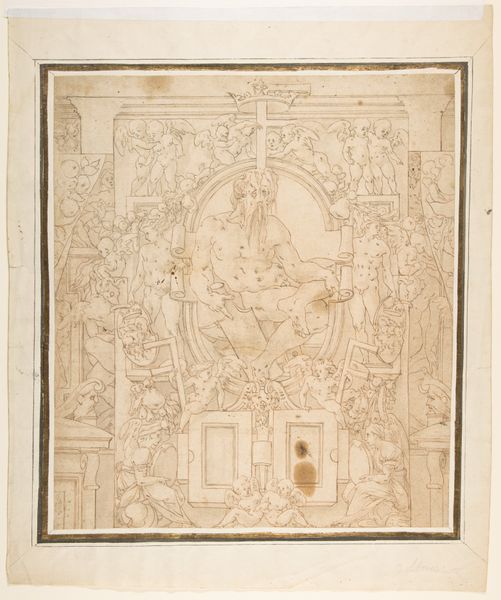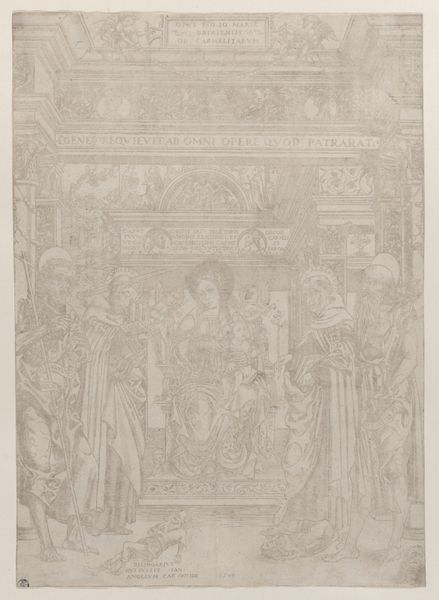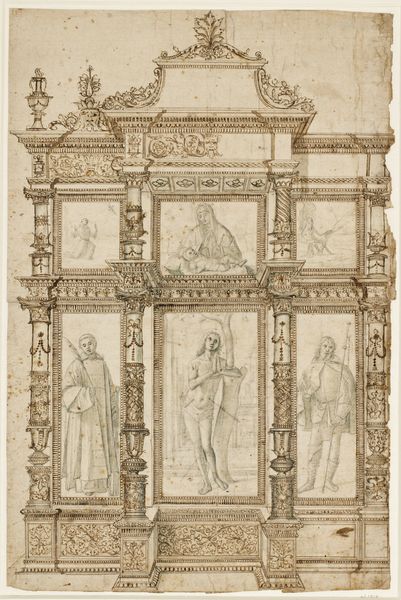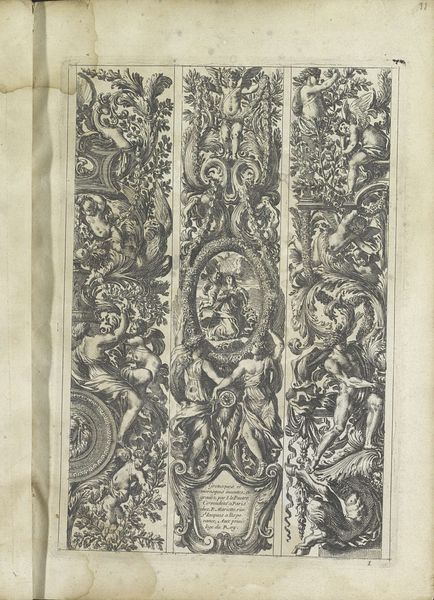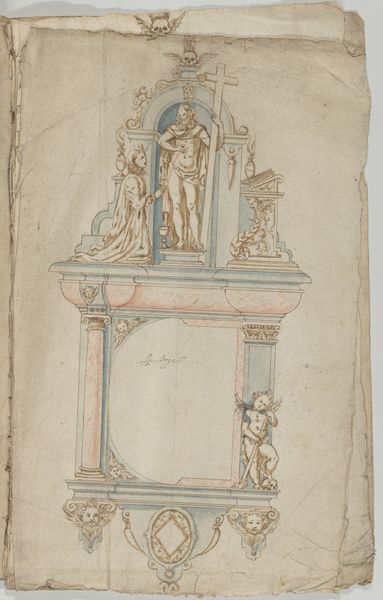
The Annunciation, flanked by Eve and the Serpent and Gideon's Fleece, from a Biblia Pauperum blockbook, 3rd edition 1445 - 1485
0:00
0:00
drawing, print, pen
#
drawing
#
medieval
#
narrative-art
# print
#
pen
#
history-painting
#
international-gothic
Dimensions: Sheet: 10 13/16 × 8 7/16 in. (27.5 × 21.4 cm) Block: 10 1/16 × 7 5/16 in. (25.6 × 18.6 cm)
Copyright: Public Domain
Editor: We're looking at a page from "Biblia Pauperum," "The Annunciation, flanked by Eve and the Serpent and Gideon's Fleece," from between 1445 and 1485, created by an anonymous artist. It’s a pen drawing used as a print. It’s got a narrative quality, almost like a comic. I find it very visually dense! How do you interpret this work, considering its historical context? Curator: This blockbook page offers a fascinating window into late medieval understandings of theology, gender, and power. The central image of the Annunciation is framed by Eve and the serpent on one side, and Gideon's fleece on the other. These juxtapositions are not accidental. Editor: How so? Curator: Think about the narratives being presented. We have the Virgin Mary, obedient and pure, contrasted with Eve, who succumbed to temptation. Consider these figures within a broader socio-political framework: what messages about female roles and agency were being reinforced in the late medieval period? Do you notice the figures beneath each scene, enclosed by arched doorways and lettered script? Editor: Now that you point it out, the contrast between the purity and temptation narratives does speak volumes about social power! The male figures seem almost like authorities. What impact do you think this art had in a time of significant patriarchal control? Curator: Blockbooks like this were instrumental in disseminating religious ideas, and they acted as vehicles for shaping cultural values. The stark contrasts would solidify contemporary, albeit patriarchal, social structures, casting Eve as a symbol of feminine weakness. I think such pieces reinforced specific behaviours within an increasingly strict societal construct. Editor: This framework gives me a new understanding and perspective. It’s eye-opening to consider not just what the art depicts but also the historical and social conversations that are amplified and challenged. Curator: Precisely. Art like this serves as a primary source. Exploring these historical tensions adds depth to what we see, which opens doors for richer dialogues and deeper revelations.
Comments
No comments
Be the first to comment and join the conversation on the ultimate creative platform.
